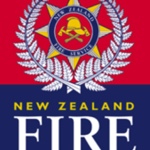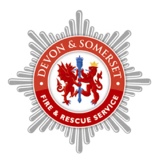Information
-
Audit Title
-
Document No.
-
Client / Site
-
Conducted on
-
Prepared by
-
Location
-
Personnel
Category 1 - Operational Polices and Procedures
-
1.1 Are local operational policies and procedures up to date and accessible to all operational personnel?
-
1.2 Are NZFS operational policies and procedures available to all operational personnel?
Category 2 - Operational Personnel
-
2.1 Is the current brigade establishment above 90%?
-
2.2 Is the current brigade establishment below 120%?
-
2.3 Does the brigade have sufficient Qualified Officers? (20% of total membership)
-
2.4 Have all Officers promoted after 01/01/2006 attended an Officers course?
-
2.5 Does the brigade have sufficient qualified emergency response drivers?
-
2.6 Do personnel have up to date skills, qualifications and certifications for their role?
-
2.7 Are the skills attained recorded in SMS certifications?
-
2.8 Are any specialist skills required for the role/profile loaded onto OSM?
-
2.9 Are there sufficient fire fighters to provide an effective response?
-
2.10 Are there adequate numbers of operational personnel ready to progress to the next rank?
-
2.11 Are all operational members currently in OSM green status?
Category 3 - Operational Buildings and Facilities
-
3.1 Is programmed maintenance of the station being carried out?
-
3.2 Have faults, defects or other issues with the station operational readiness components been reported?
-
3.3 Is the Station Evacuation Plan available to all station users?
-
3.4 If there is an operational servicing facility at the station, has this been checked to ensure it is in good working order?
-
3.5 If there is an operational training facility at the station, has this been checked to ensure it is in good working order?
Category 4 - Operational Communications
-
4.1 Is the station's communication and turnout equipment fully functional?
-
4.2 Is the communication equipment in the station's vehicles fully functional?
-
4.3 Have faults, defects or other issues with communication equipment and/or systems been reported?
Category 5 - Operational Fleet
-
5.0.1 Are operational personnel trained in operational vehicle driving policy and procedures?
-
5.0.2 Do drivers meet driving hours legal requirements(FL1-4)?
-
5.1.0 Individual appliance checklist Appliance 1
-
5.1.1 Registration plate number:
-
5.1.2 Call sign:
-
5.1.3 Has vehicle servicing been completed according to NZFS maintenance requirements (FL3-3POP)?
-
5.1.4 Have the drivers checks been completed?
-
5.1.5 Is the appliance inventory checked regularly?
-
5.1.6 Does the equipment on the appliance comply with the relevant Standard Equipment List (FL3-1)?
-
5.1.7 Is equipment stowed correctly (if applicable)?
-
5.1.8 Has appliance pump testing been completed?
-
5.1.9 Is the annual registration current?
-
5.1.10 Is the certificate of fitness current?
-
5.1.11 Is the electrical warrant of fitness current?
-
5.1.12 Are the road user kms current?
-
5.1.13 Is Aerial certification current?
-
5.2.0 Individual appliance checklist Appliance 2
-
5.2.1 Registration plate number:
-
5.2.2 Call sign:
-
5.2.3 Has vehicle servicing been completed according to NZFS maintenance requirements (FL3-3POP)?
-
5.2.4 Have the drivers checks been completed?
-
5.2.5 Is the appliance inventory checked regularly?
-
5.2.6 Does the equipment on the appliance comply with the relevant Standard Equipment List (FL3-1)?
-
5.2.7 Is equipment stowed correctly (if applicable)?
-
5.2.8 Has appliance pump testing been completed?
-
5.2.9 Is the annual registration current?
-
5.2.10 Is the certificate of fitness current?
-
5.2.11 Is the electrical warrant of fitness current?
-
5.2.12 Are the road user kms current?
-
5.2.13 Is Aerial certification current?
-
5.3.0 Individual appliance checklist Appliance
-
5.3.1 Registration plate number:
-
5.3.2 Call sign:
-
5.3.3 Has vehicle servicing been completed according to NZFS maintenance requirements (FL3-3POP)?
-
5.3.4 Have the drivers checks been completed?
-
5.3.5 Is the appliance inventory checked regularly?
-
5.3.6 Does the equipment on the appliance comply with the relevant Standard Equipment List (FL3-1)?
-
5.3.7 Is equipment stowed correctly (if applicable)?
-
5.3.8 Has appliance pump testing been completed?
-
5.3.9 Is the annual registration current?
-
5.3.10 Is the certificate of fitness current?
-
5.3.11 Is the electrical warrant of fitness current?
-
5.3.12 Are the road user kms current?
-
5.3.13 Is Aerial certification current?
-
5.4.0 Individual appliance checklist Appliance 4
-
5.4.1 Registration plate number:
-
5.4.2 Call sign:
-
5.4.3 Has vehicle servicing been completed according to NZFS maintenance requirements (FL3-3POP)?
-
5.4.4 Have the drivers checks been completed?
-
5.4.5 Is the appliance inventory checked regularly?
-
5.4.6 Does the equipment on the appliance comply with the relevant Standard Equipment List (FL3-1)?
-
5.4.7 Is equipment stowed correctly (if applicable)?
-
5.4.8 Has appliance pump testing been completed?
-
5.4.9 Is the annual registration current?
-
5.4.10 Is the certificate of fitness current?
-
5.4.11 Is the electrical warrant of fitness current?
-
5.4.12 Are the road user kms current?
-
5.4.13 Is Aerial certification current?
Category 6 - Operational Planning and Intelligence
-
6.1 Does the station have an up-to-date Station Emergency Plan?
-
6.2 Are there site plans for all significant identified risks?
-
6.3 Is there evidence that risk and/or tactical plans are reviewed and updated regularly for all significant risks?
-
6.4 Does the station have up to date documented knowledge of local firefighting water supplies, including: water mains static water supplies, and transportable water supplies?
-
6.5 Is there evidence that firefighting water supplies are inspected and tested?
-
6.6 Do personnel know where daily operational information is located and how to access it?
Category 7 - Operational Equipment
-
7.1.1 Is each appliance carrying the BA equipment required by national policy FL3-1 Standard equipment lists?
-
7.1.2 Are all breathing apparatus sets located at this location in test?
-
7.1.3 Is there evidence that each BA set is checked: at the start of each shift (paid stations) / weekly (volunteer stations) after a callout, and during weekly equipment checks?
-
7.1.4 Are BA cylinders on appliances maintained at minimum required pressure?
-
7.1.5 Has station emergency care equipment been checked during daily/weekly equipment checks?
-
7.1.6 Has foam equipment been checked during daily/weekly equipment check?
-
7.1.7 Have portable generators been checked during daily/weekly equipment checks?
-
7.1.8 Has hose been checked during daily/weekly equipment checks?
-
7.1.9 Have portable ladders been checked during daily/weekly equipment checks?
-
7.1.10 Have portable pumps been checked during daily/weekly equipment checks?
-
7.1.11 Have extinguishers been checked during daily/weekly equipment checks?
-
7.1.12 Is waterway equipment checked during daily/weekly equipment checks?
-
7.1.13 Is each PPV fan checked during daily/weekly equipment checks?
-
7.1.14 Is hydraulic rescue equipment checked during daily/weekly equipment checks?
-
7.1.15 Is each thermal imaging camera checked during daily/weekly equipment checks?
-
7.1.16 Has gas detector bump testing been carried out?
-
7.1.17 Does station DIM equipment have up-to-date calibration?
-
7.2.0 Is there evidence to show that the following standard tests are conducted on:
-
7.2.1 Miscellaneous equipment
-
7.2.2 Electrical equipment
-
7.2.3 Lines
-
7.2.4 Extinguishers
-
7.2.5 Ladders
-
7.2.6 Level 3 clothing
-
7.2.7 Portable pump(s)
-
7.2.8 Main pump(s)
-
7.2.9 Waterway equipment
-
7.2.10 Hose
-
7.2.11 Belts, slings, harnesses, stretchers
-
7.2.12 Wire ropes, chains, hooks
-
7.2.13 D rings, karabiners, descenders
-
7.2.14 Air bags
-
7.2.15 Hydraulic rescue equipment
-
7.2.16 Is there a process in place for reporting equipment faults and defects?
-
7.2.17 If a volunteer Brigade has additional equipment, is it approved?
Category 7a- Operational Equipment - PPE Uniform
-
7.3.0 Does each Operational firefighter have appropriate PPE allocated:
-
7.3.1 Structural firefighting jacket and over trousers
-
7.3.2 Flash hood
-
7.3.3 Structural firefighting gloves
-
7.3.4 Structural firefighting boots
-
7.3.5 Structural firefighting helmet with correct markings
-
7.3.6 Wildfire/rescue coverall or a jacket and trousers
-
7.3.7 Wildfire/rescue gloves
-
7.3.8 Wildfire/rescue boots
-
7.3.9 Wildfire/rescue helmet (where available), or structural firefighting helmet, with correct markings
-
7.3.10 Storm jacket and over trousers available
-
7.4.0 Does each Operational Support member have appropriate PPE allocated:
-
7.4.1 Operational support uniform jacket
-
7.4.2 Operational support over trousers or wildfire/rescue coverall
-
7.4.3 Wildfire/rescue or structural firefighting helmet with correct markings
-
7.4.4 Wildfire/rescue gloves
-
7.4.5 Structural firefighting or wildfire/rescue boots
-
7.5.0 General Uniform
-
7.5.1 Are all PPE items in a suitable condition for their intended use?
-
7.5.2 Is there evidence that PPE is cleaned after use following correct procedure?
-
7.5.3 Is PPE stored correctly (N2POP)?
-
7.5.4 Are inspections of PPE carried out by the station OIC/CFO?
-
7.5.5 Is there a process for reporting faults, defects or other issues with PPE?
Category 8 - Service Delivery Guidelines
-
8.1 Operational personnel aware of Service Delivery Guidelines?
-
8.2 Service Delivery Guidelines achieved (N7a)?
-
8.3 Fire Reports completed within 30 days?
-
8.4 Incident response tasks completed within 14 days?
-
8.5 General comments on Station / Brigade operational readiness
-
Add signature











